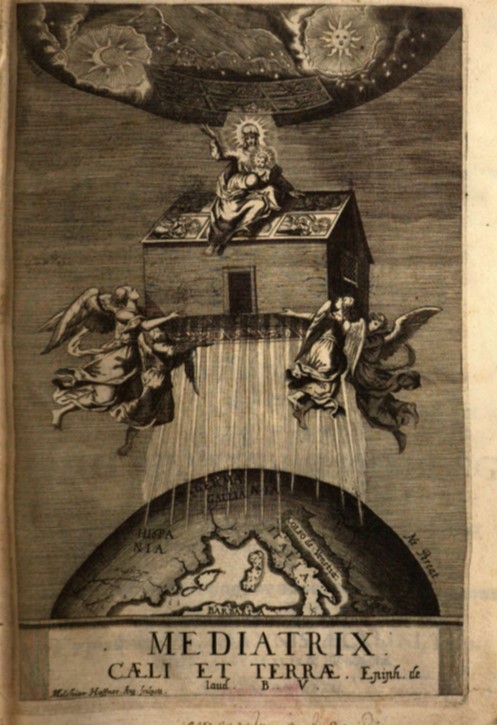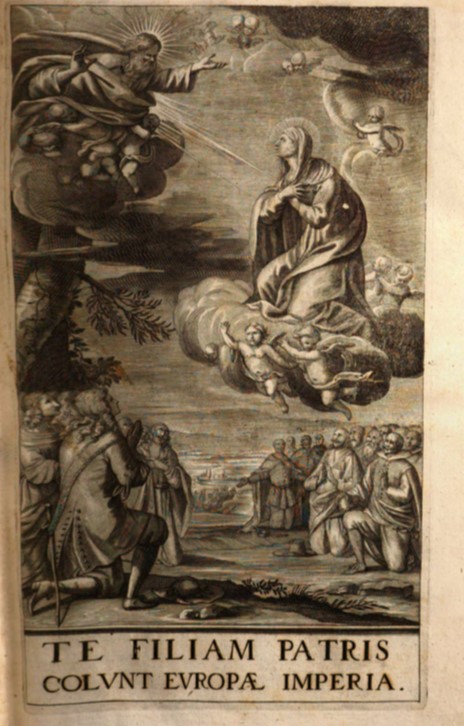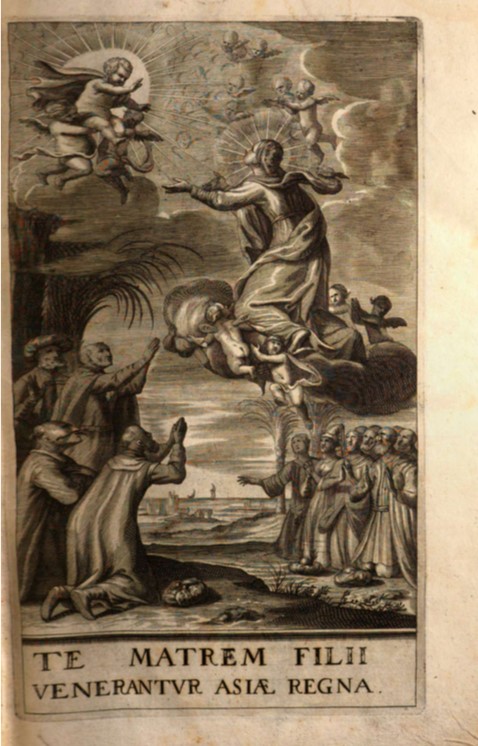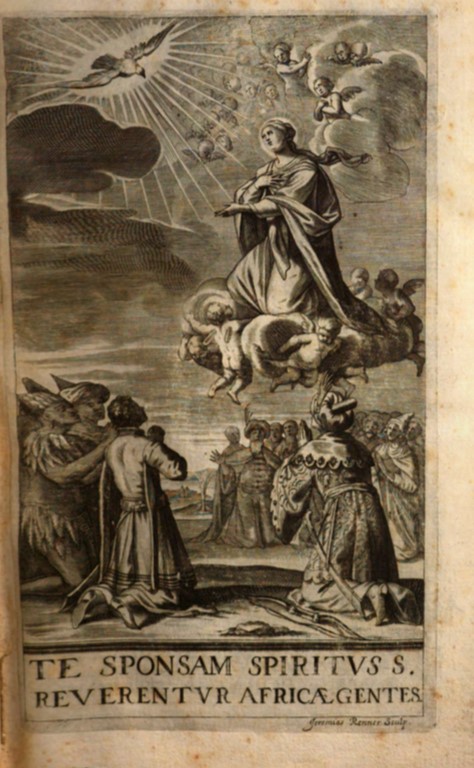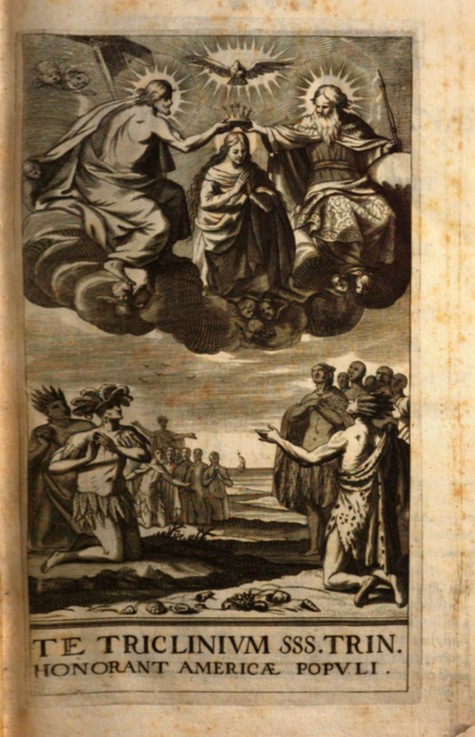In a Marian World: Der Atlas Marianus. The Unity of Religion Overrides National or Local Difference (1672)
Abstract
German Jesuit Wilhelm Gumppenberg (1607–1675) intended this volume as a compendium of global sites where miraculous images of the Virgin Mary appeared. The images included here introduce a conception of the world in which the spiritual presence of Mary creates spatial understanding and serves to connect the various parts of the world and their inhabitants. Difference is represented by the four continents (Europe, Africa, Asia, and America) and is primarily depicted through dress. Expressions of devotion appear quite similar from place to place, regardless of who is performing them, and this may gesture toward a kind of equality among ethnicities/races in their ability to be Catholic. It is not necessarily “national” identity that come to the fore here but rather a more general confessional identity, whether European, African, Asian, or American.
Source
Source: Wilhelm Gumppenberg, Atlas Marianvs, Quo Sanctae Dei Genitricis Mariae Imaginvm Miracvlosarvm Origines Duodecim Historiarum Centurijs explicantur [Atlas Marianus]. Monachii: Jaecklin, 1672, Frontispiece (Mediatrix Caeli et Terrae); Te Filiam Patris colunt Europa imperia; Te Matrem Filii venerantur Asiae regna; Te sponsam Spiritus S. reverentur Africae gentes; Te triclinium SSS Trin. honorant Americae populi (scanned pages 7, 79, 493, 771, 1037). Available online at: http://www.mdz-nbn-resolving.de/urn/resolver.pl?urn=urn:nbn:de:bvb:12-bsb11204453-6
Bavarian State Library
